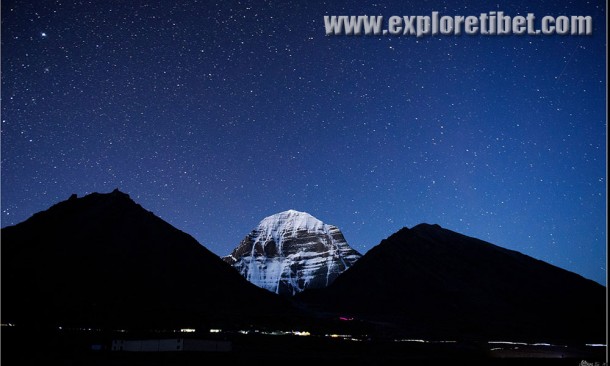Mount Kailash.

For most people, a trip to western Tibet is virtually synonymous with a visit to mount Kailash. The power of this strange,domed peak has gripped the imagination of the people of India and Tibet since time immemorial,with the result that it has long been one of the Asia’s most important ( and remote ) pilgrimage destinations. Most recently,Mount Kailash’s reputation as a sacred mountain as well as a place of natural beauty has begun to lure travelers and pilgrims from around the world. Mount Kailash is remarkable in that four of the largest rivers in Asia have their sources with 100km(62miles) of it.
The indus flowing to the north,The Brahmaputra to the east, The Sutlej to the west and the Karnali( leading to the Ganga) to the south. As a mountain in this part of the world its not particularly high, a mere 6,714m(22,027ft),yet it is striking in the way it rises above the surrounding range wuth remains perpetually snow-capped.The stunning image of the this white peak against the clear blue sky helps to explain the mountain’s name in Tibetan,Gang Rinpoche,or Jewel of snow.
Circumambulations( kora) of Kailash.
It is the goal of every pilgrim to Kailash to walk at least once around the base of the sacred mountain. This act of circumambulation,or Kora in Tibetan and Parikrama in sanskrit,is considered to hold great powers of purification for the pilgrim. Some say that by completing the route just once, a person can purify the effects of all the negative actions of the present lifetime. Of course, the degree of purification can be increased by further trips around the mountain, with the most merit accrued to those who perform prostrations along the entire length of circumambulation route.Even if you do not plan to prostrate around the mountain, however, it is still necessary to be properly equipped and prepared before undertaking the arduous trek around the mountain. Although many hardy Tibetan pilgrims complete the 51km long ( 32mi) circumambulation route in one day, less robust pilgrims should definitely take a slower pace, as should visitors who wish to contemplate the scenic beauty and absorb the various subtle moods and ever changing atmosphere of the mountain. even if one walks fairly quickly, the circumambulation can easily take two full days with one overnigh stay at Dri-ra-puk.( Tibetan one-dayers leaves at 4A.M and arrive back midnight).
Mount Kailash also sports many other extraordinary formations: on the peaks and ridges are needles,points,and protuberances, some of the which are said to be stupas.
Recent Posts
Top 5 Most Asked questions on Tibet Travel
7 Tips for a Successful Trip to Tibet
A Journey to Everest Base Camp in Tibet
All Categories
- About Tibet
- book a Tibet tour
- Buddhism Practice
- Budget Tour
- China-Tibet Train
- Customized Tibet tour
- Historical Sites
- Hot Springs in Tibet
- News
- Photography in Tibet
- Tibet attraction
- Tibet Group Visa
- Tibet Motorcycle Tour
- Tibet Small Group Tours
- Tibet Tours and Tibetan Tour Guide
- Tibet Train
- Tibet Travel FAQs
- Tibet Travel Information
- Tibet Travel News
- Tibet Travel Permit Update
- Tibet Travel Prices Rises
- Tibet Trek
- Tibet Trekking Tour
- Tibet weather and climate
- Tibet Wildlife animals
- Tibet Winter Tour
- Tibetan Buddhism
- Tibetan Cultural Features
- Tibetan Culture and Poeple
- Tibetan Festivals
- What to see in Tibet


